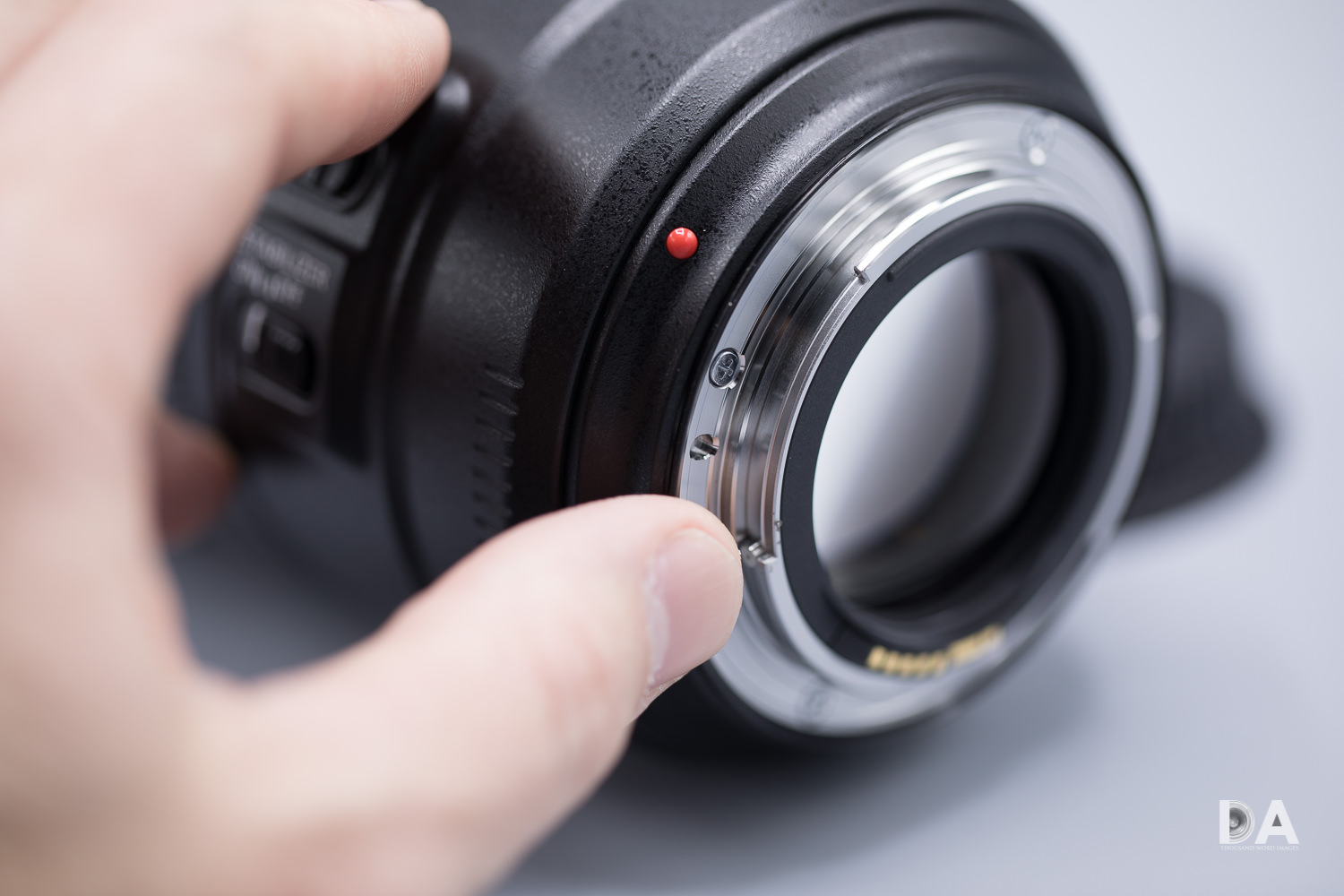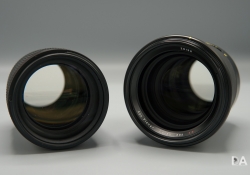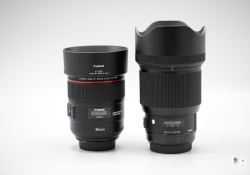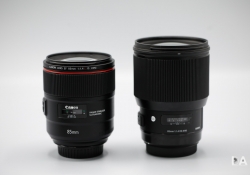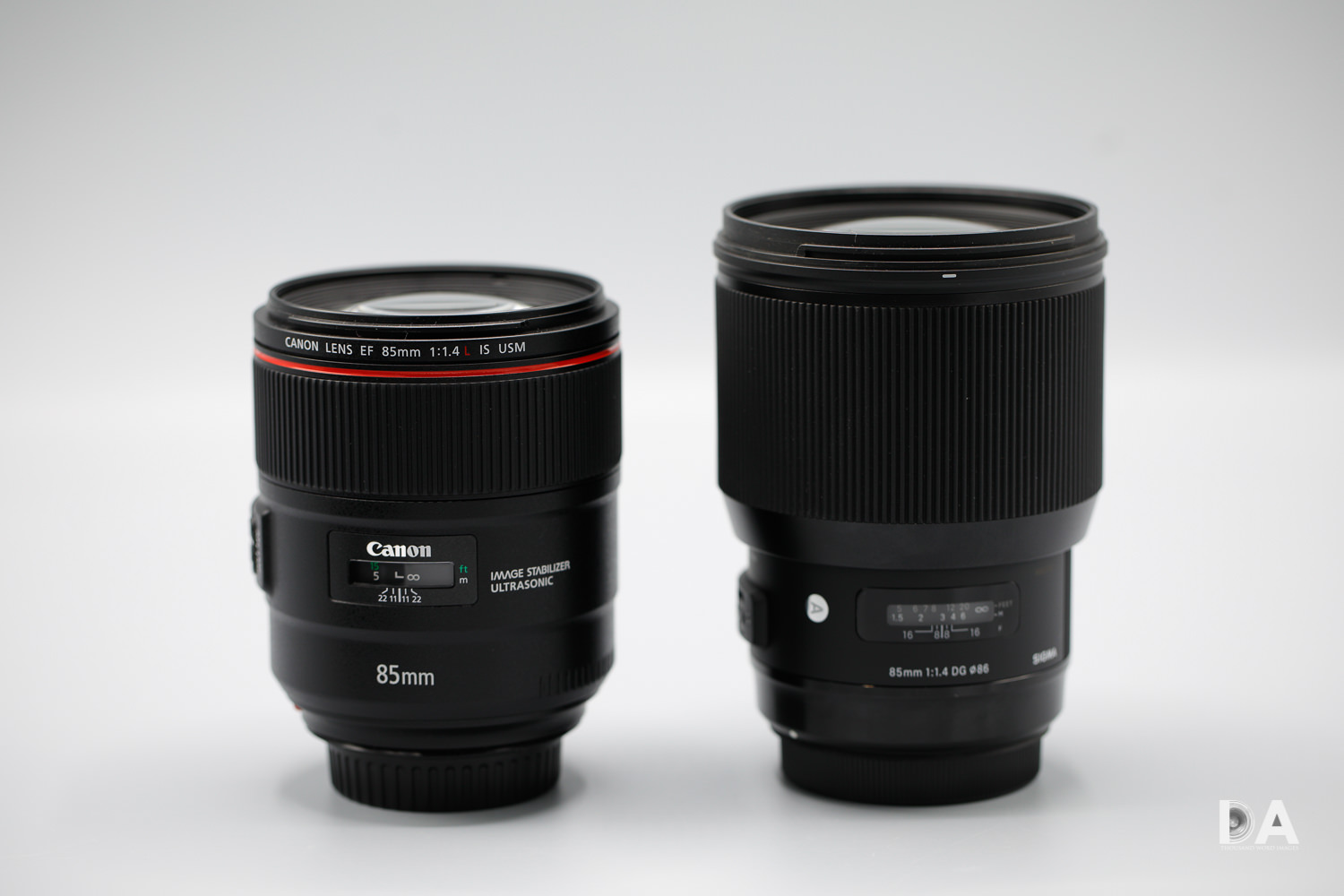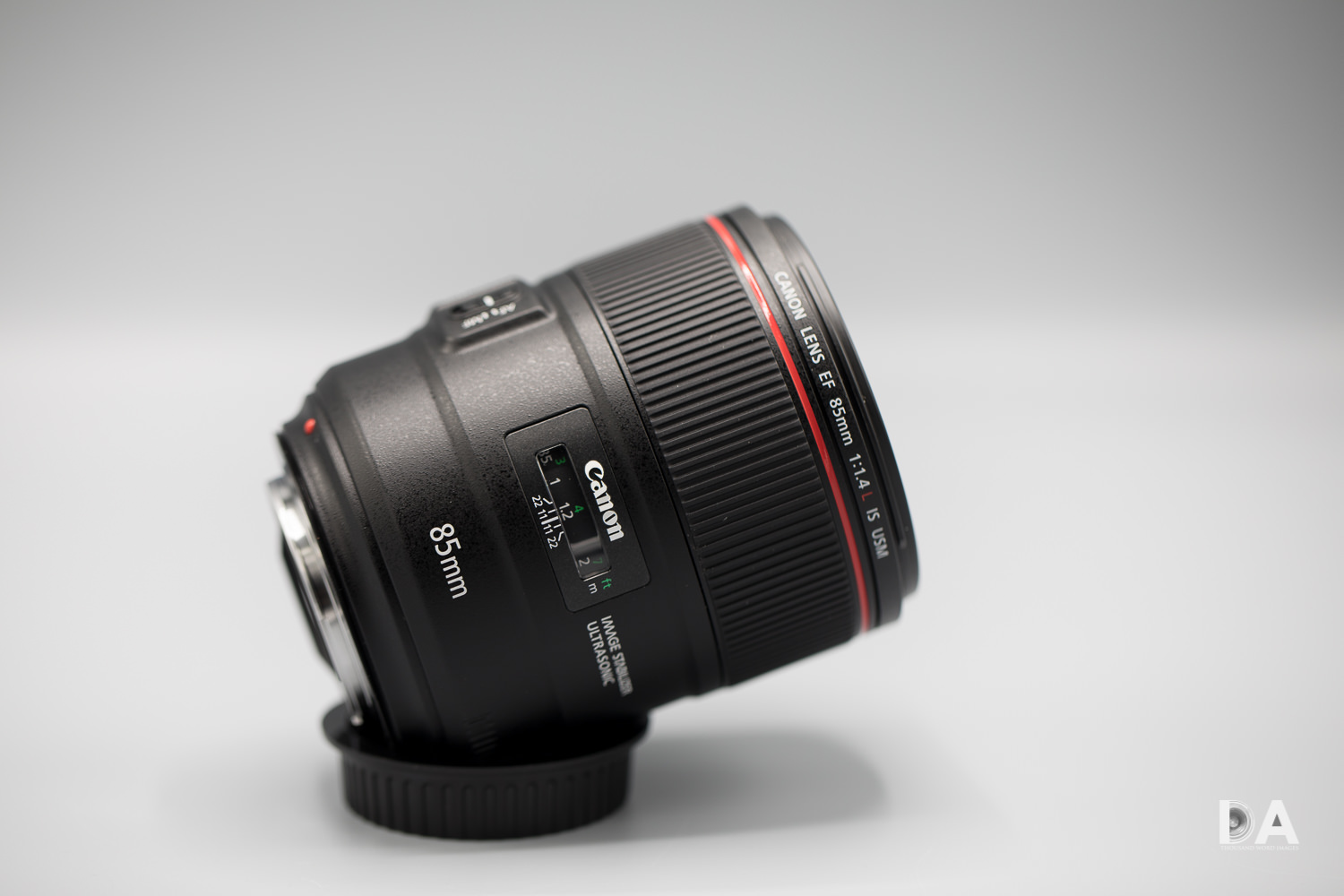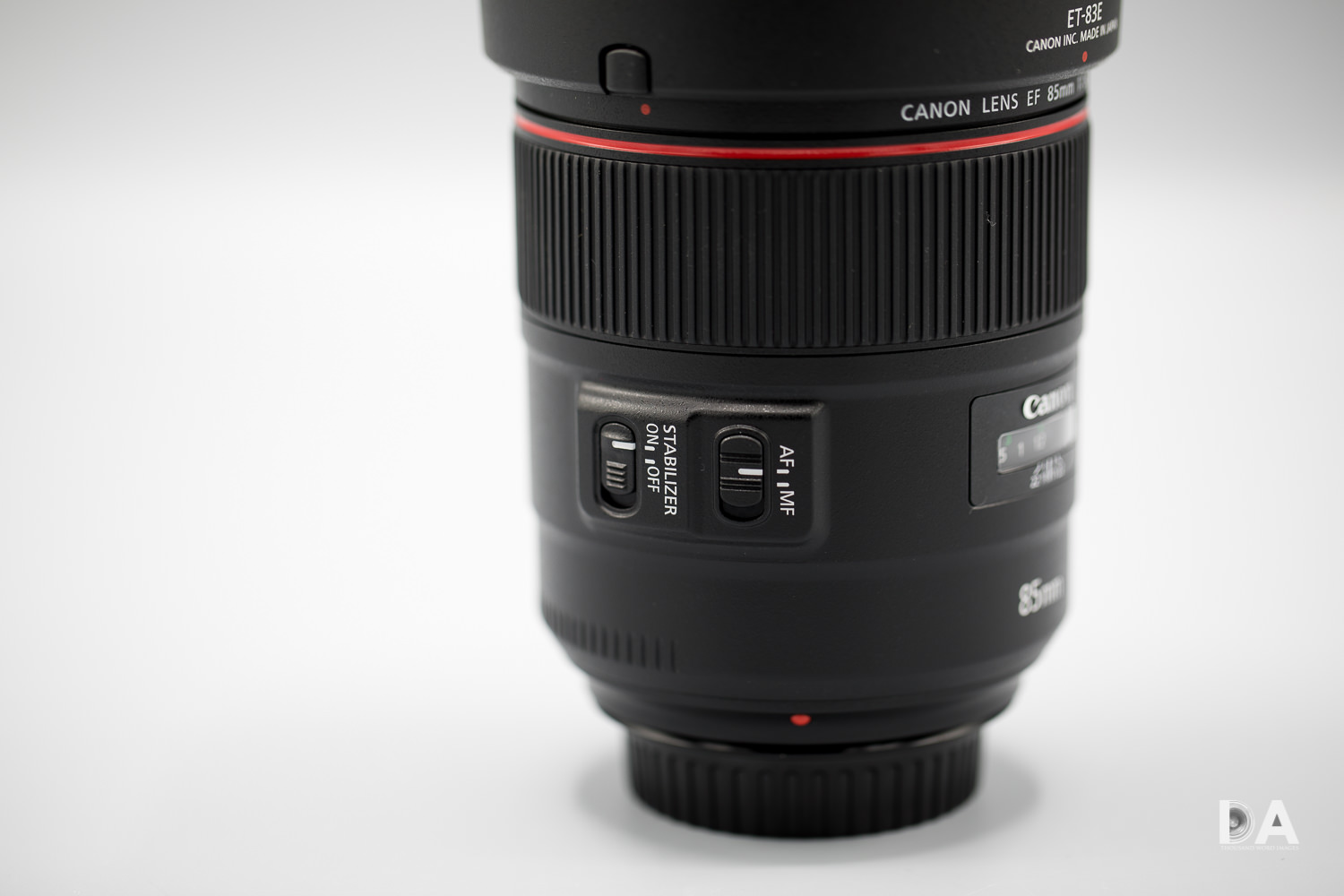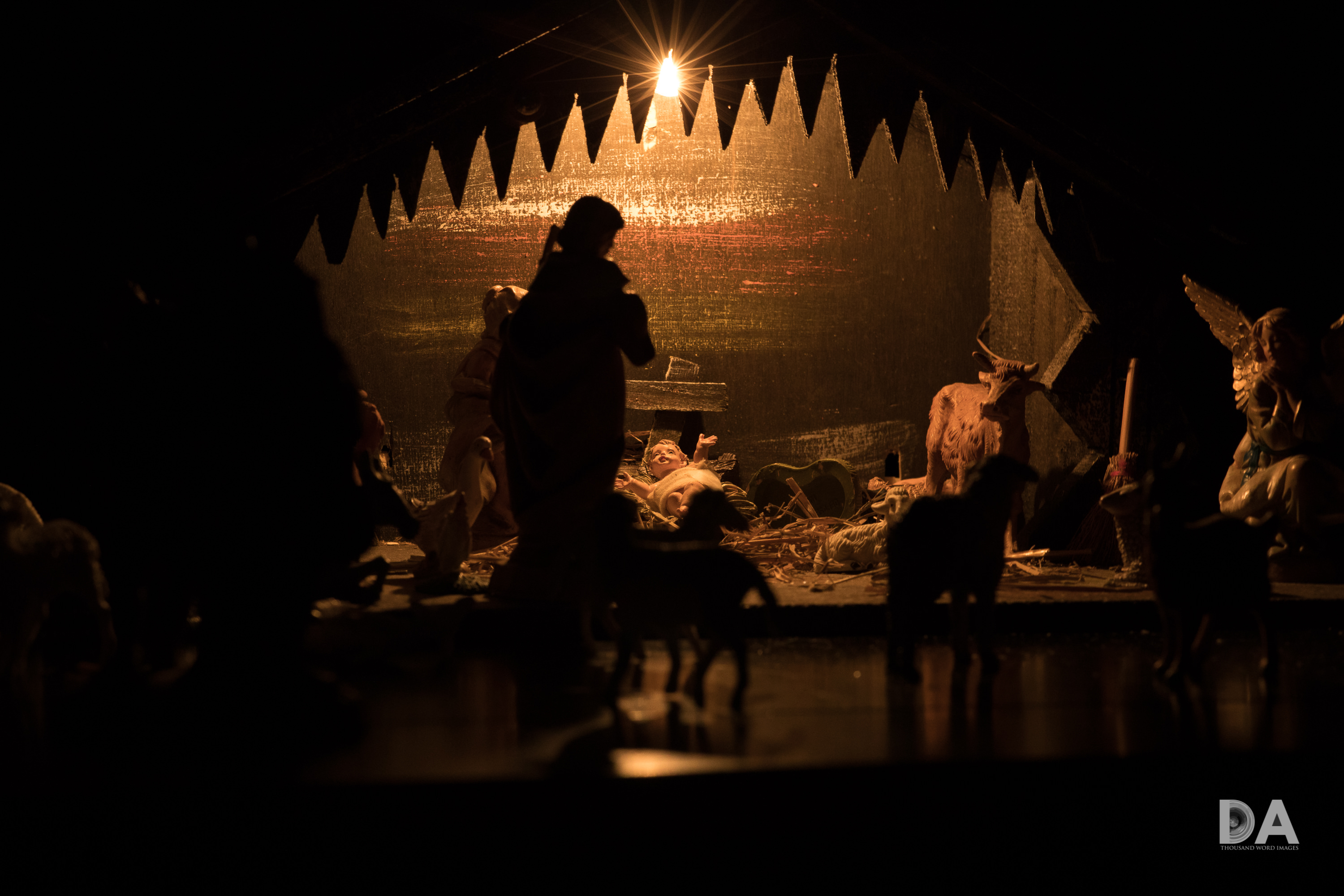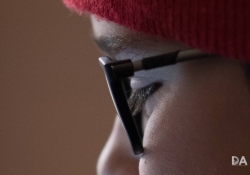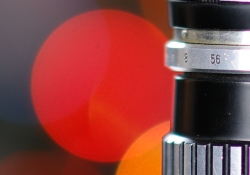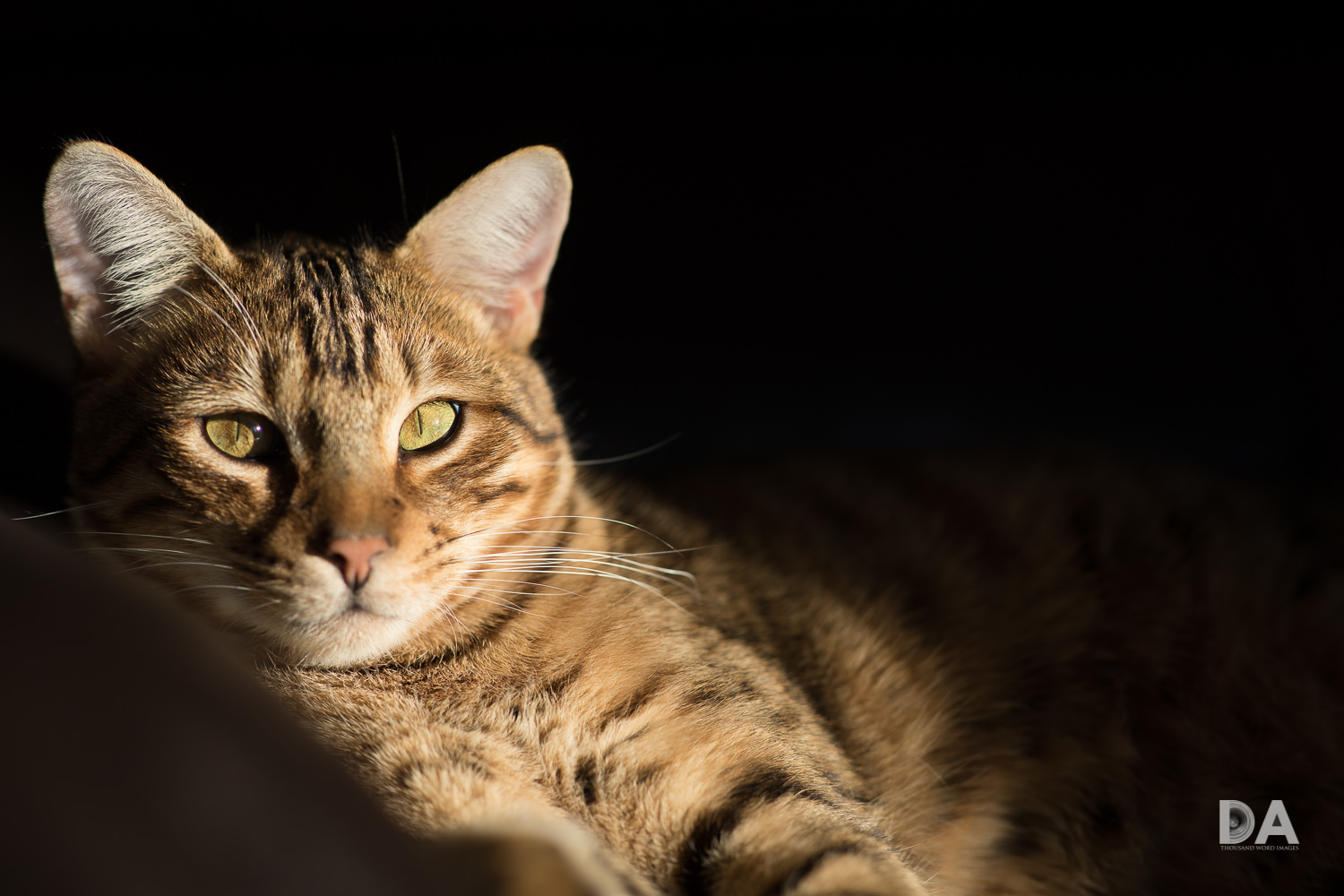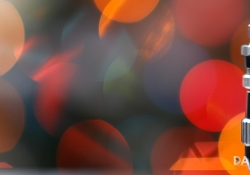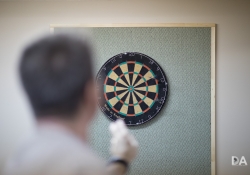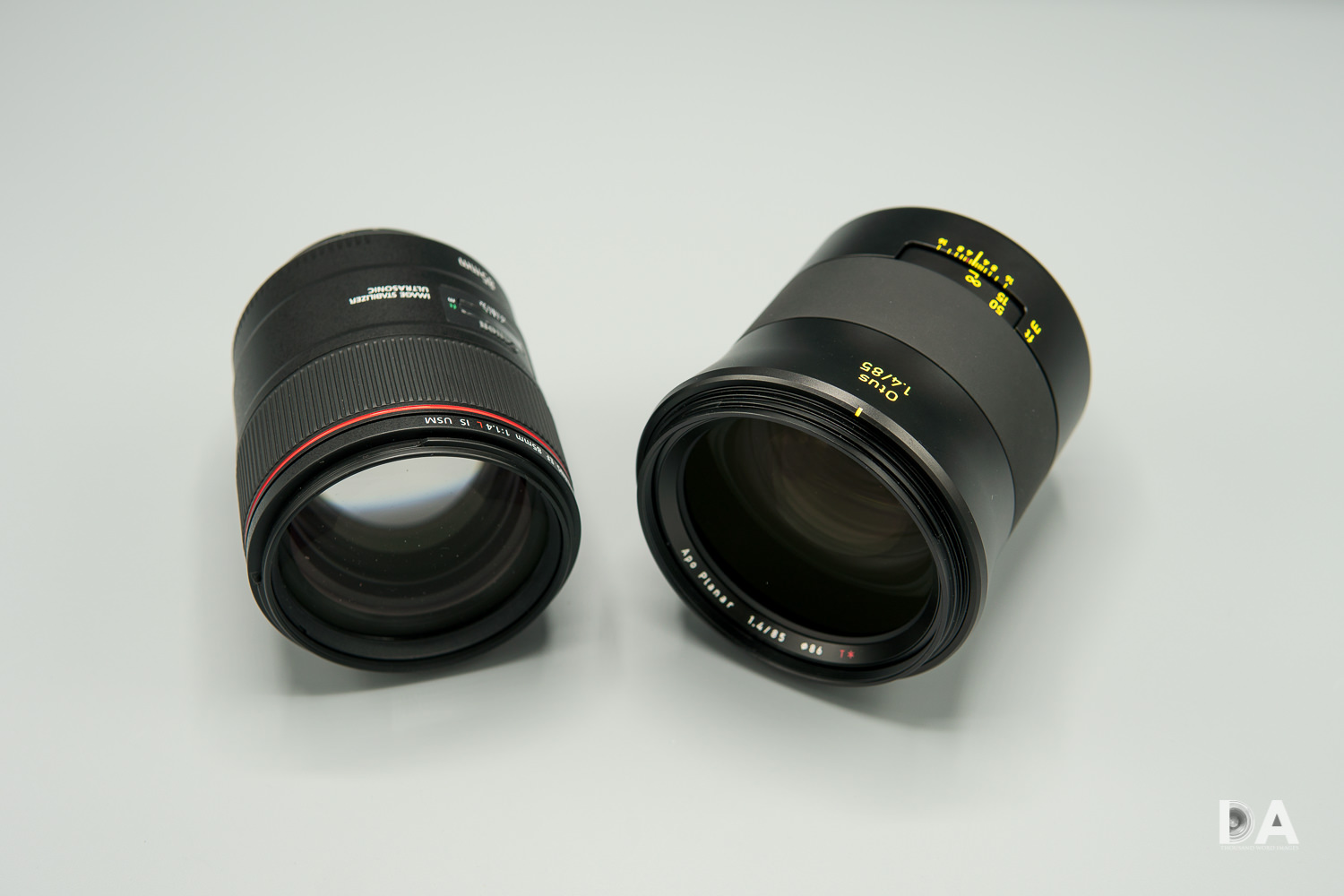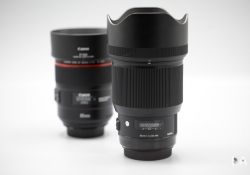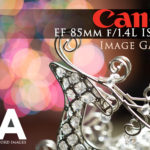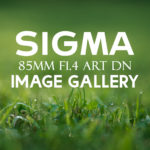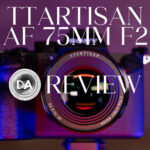Wow! It has been a long, long time I have received a new Canon L series prime lens. It was two years ago that I reviewed the excellent Canon EF 35mm f/1.4L II, and since that point I have reviewed no new L series prime lenses and only two Canon L series zooms (the somewhat disappointing 24-105mm f/4L II and the excellent yet flawed 16-35mm f/2.8L III). During that same period Tamron has churned out a whole new series of prime lenses (SP primes in 35mm, 45mm, and 85mm focal lengths) along with three generally excellent G2 zoom lenses (my reviews here) and the ever prolific Sigma has launched 4 ART series prime lenses (14mm, 20mm, 85mm, 135mm) along with 3 ART series zooms (12-24mm f/4, 24-70mm f/2.8, and 50-100mm f/1.8), all of which I have reviewed. On top of that Sigma also launched a premium 500mm f/4 OS lens, for a grand total of 9 premium lenses over that same period. And this doesn’t even consider the number of Zeiss Milvus lenses that also compete in this same category of premium prime lenses (I’ve reviewed an 18mm, 35mm, 50mm, 85mm, and 135mm new Milvus prime lenses since that review and am starting the new 25mm f/1.4 review), and Samyang/Rokinon has also launched a premium series with very good 14mm and 85mm prime lenses to day. Suffice it to say that the competition has really stepped up its game over the past two years, and Canon is launching the new EF 85mm f/1.4L IS USM to a much more crowded market. Generally all the lenses that I have mentioned are optically excellent, with the weakest of them actually being one of the Canon lenses (the 24-105mm f/4L IS II). Expectations are obviously very high for this lens, so is the Canon 85L IS ready to deliver?
Prefer to watch your reviews? You can watch my thorough video review here:
Canon 85L IS Build Quality
I’m always interested when the guys over at LensRentals tear down lenses and look at the quality of their build beneath the exoskeleton. I have to evaluate the build quality of lenses from the outside based on the quality of the the materials, the heft of the lens, and the amount of squeaks and wobbles I can perceive, so I enjoy seeing the perspective of those who understand the engineering side and have to regularly repair lenses. When Canon released the Canon EF 35mm f/1.4L II a couple of years ago, their “tear-down” article was more enthusiastic than any I had read before. They praised not only the internal building materials but the logic and precision of the internal design. The 35L II does have a unique heft to it that feels a bit more “Zeiss” than typical “Canon”. I’m hoping the Canon 85L IS has a similar quality of design and build, and it definitely follows the familiar pattern of appearance that we last saw on the 35L II.
For a closer look at the build and design of the 85L IS, take a look at this video:
The design language is familiar Canon L, with a well built lens wrapped in some quality engineered plastics. Unlike the Canon EF 24-105mm f/4L IS II that I reviewed a few months back, the lens doesn’t feel “plasticky” in the hands; just solid. Unlike the 85mm f/1.2L II, the new 85L IS has thorough weather sealing, which is a significant reason for some shooters to choose it over the 85L II.
One other observation that should help with weathersealing: all focus is not only internal, but in the middle group of elements, which means that nothing at either the front or the back moves during focus. To me that indicates less opportunity for dust or moisture to enter the lens, and I consider that a big positive. The lens also receives expensive fluorine coatings on both the front and back elements, which not only help with weather resistance (no need for a protection filter to complete the weather sealing) but also makes the lens elements easier to clean.
The move to a slightly smaller maximum aperture (f/1.4 vs f/1.2) has resulted in slightly lighter lens (2.09lb/950g vs 2.4lb/1025g) but one with a different profile. The 85LII is squatter, only 3.3” (84mm) long compared to 4.15” (105.4mm) in length for the new 85L IS, but the 1.2 lens has a wider girth at 3.6” (91.4mm) compared to 3.49” (88.6mm). Interestingly, the more narrow lens (the new 85L IS) has a larger front filter size (77mm) than the wider lens (85mm f/1.2L II) and its 72mm front filter.
The heavyweight in terms of size and weight in the class is the Sigma 85mm f/1.4 ART, of course, which is a true behemoth. When I put it on my scale without either front or rear cap (bare lens), I got a weight of 1139 grams. With caps it came in at 1227g, which means that it is definitely in Zeiss Otus/Milvus 85mm f/1.4 range, and Zeiss lenses are famous for employing higher grade metals than everyone else. Their build quality is superlative in a way the Sigma’s is not, so it’s weight is in many ways the most surprising. The Sigma nearly 5 inches long (126.2mm) and has a mammoth 86mm front filter thread. It’s an unusually large lens, particularly when compared to previous generation 85mm options!
Of this group the new Canon 85L IS is actually the lightest, which is impressive considering that it is has an Image Stabilization system as well. The only other 85mm option (in a Canon mount) is the Tamron SP 85mm f/1.8 VC, which I will benchmark some in this review. It has a smaller maximum aperture, and thus comes in at a lighter weight (1.54lb/700g). Despite the smaller aperture, however, it is a beautifully made lens with an all metal construction and high-end weather sealing. It gets dismissed sometimes in this discussion because people associate f/1.8 with “Consumer” 85mm lenses (cheaper lenses), though, as we will see, it is very much a pro-grade lens.
The 85L IS has the standard nine rounded aperture blades, and my tests show that it does a very good job retaining a circular shape as the aperture is closed down. It has a minimum focus distance of 85cm that is shares with the Sigma ART lens, and delivers a very standard 0.12x magnification figure, which is a slight improvement on the 85L II. Tops in this class is the Tamron with a 0.14x magnification, which it achieves by being able to focus down a little closer (80cm) and by having a slightly “generous” 85mm focal length (it frames tighter in all my comparisons than competing lenses).
It is probably more like 86-87mm, and I suspect the Canon 85L IS is more like 84mm. There is definitely a framing difference at all focus distances between the two lenses, and I noted something similar when comparing the Sigma to the Tamron. The Sigma, for the record, frames looser than any of the other 85mm options I’ve compared it to, so it is probably in the 83-84mm range. Note that all lens’ makers round their focal lengths up or down to the standard focal length (in this case 85mm). There is a limit to how much adjustment they can make (by regulation), so this isn’t really a big deal.
The 85L IS has a nice, wide manual focus ring with nice ribbing for grip. It moves nice and easy, but without a lot of tactile feedback (it’s no Zeiss!) I estimate the focus throw at about 120 degrees, and there seems to be enough distance there for accurate manual focus at a variety of focus distances.
The lens balances nicely on full frame bodies, and the girth of the lens makes it easy to find and steady with the left hand. The size and weight seem reasonable but not excessive, and I see nothing to complain about in the general construction. There are no surprises in the switches (AF/MF and IS ON/OFF), though I will note that the third-party switches from Sigma and Tamron look, feel, and operate with more quality than the first party switches from Canon and Nikon. There is a distance window as well as some hyperfocal markings, but the latter are too tightly squeezed together to be of any real use.
The only slightly odd note here is the lens hood, which is a departure from the norm for Canon on several fronts. First of all is the shallow depth (about 1 ½”/3.5cm), which scarcely seems deep enough to provide much shading (and already people have noted that it provides very little protection from rain when shooting). There is no other 85mm lens with such a shallow hood, so it’s a little hard to understand the reasoning here. The lens hood has a different interior finish, too, with plastic ribs rather than the felt-like flocking that is common in Canon lens hood. I’m not sure what to make of this change or the logic behind it…so I’ll let you figure that one out!
It is worth noting the price, which seems to have influenced somewhat by the strong third-party contenders. The last Canon L prime I reviewed (EF 35mm f/1.4L II) debuted around $2000, and many of us expected at least that for this lens. The retail price (in the USA), is an expensive though reasonable $1599, which undercuts the 85L II by around $400. The Sigma 85mm f/1.4 ART is $1199, but the Canon has IS and better weather sealing, so this seems to be a fair price point for it.
Canon 85L IS Image Stabilizer
This is the largest aperture lens that Canon has ever put an image stabilizer in, and is the first 85mm f/1.4 lens to receive an image stabilization system. Some people question the need for image stabilization in a large aperture prime lens, but there are number of very important reasons for it. The first is in response to the proliferation of higher resolution bodies. It seems clear that the trend towards ever higher resolution continues, and, while there are clear benefits to high resolution bodies, there are also downsides (watch my video on the Pros and Cons of 50MP here). One of these challenges is motion blur, which occurs when either the subject or the camera moves (or both) at the time the photo is taken. The actual motion isn’t worse with a higher megapixel body, but the higher pixel count means that the blur occupies more pixels and is thus more obvious. All it takes is a little motion blur to essentially offset the higher resolution.
The solution is image stabilization. If you are Sony with the A7R series, that means introducing in body image stabilization (IBIS) when you move to high resolution. Canon and Nikon have not embraced IBIS in the same way, so that means that having lenses with image stabilization becomes very important. Put simply, most users will get sharper real world results when using the 85L IS at average shutter speeds (1/50th-1/250th) handheld than an equivalent lens without IS. If you shoot with something like the 5DsR, that upper limit may extend up to 1/500th second. That’s huge when shooting something like a wedding or event in dimmer lighting situations. As a result, the lens with IS will produce more repeatable results. Even on my 5D Mark IV (“only” 30 MP), the sharpest lens in the class (Zeiss Otus 85mm f/1.4) produces less sharp real world results handheld compared with the Canon and it’s IS…and this sample is at a very reasonable 1/200th second.
This illustrates the importance of image stabilization. You wouldn’t look at the Zeiss result and say it isn’t sharp, but that little bit of motion blur has robbed it of its superior resolution and contrast (which is very obvious when we put both lenses on a tripod in the comparison below).
This same principle will apply to higher resolution bodies. Bottom line is that Canon was smart to include an effective IS system on the 85L IS!
Another big reason for Image Stabilization is for video use, and the IS system in the Canon 85L IS makes it a very nice option for handheld video as you can see in this video here:
The Canon’s IS system works as I would expect. It makes a noticeable difference in handheld video, and enables me to shoot at very low shutter speeds (I could easily get repeatable results at 1/10th second like in this “manger scene” shot).
It is a mannerly system without any major jerking when coming on and off, and functions fairly quietly, with only a very light whirring sound when engaged. It’s quiet enough that I can mostly only hear that with my ear pressed close to the barrel. I couldn’t hear it with the camera at my eye in shooting position.
Autofocus Performance
This was perhaps the single biggest knock against the existing Canon 85mm f/1.2L II; it’s focus system, was, well, leisurely. It would focus accurately, but not in a hurry. Beyond this it employed a “focus by wire” system for manual focus that many photographers (including myself) are not big fans of. Canon has definitely improved things here by employing a true ring-type USM motor that brings fast focus speeds and more traditional manual focus with direct coupling to moving the lens elements. Those familiar with the 85L II will feel like the focus speed is blazing. If you are coming from something like a Sigma ART lens, you will find the focus speed perhaps a hair faster but a little more confident.
I strongly encourage you to watch this video to breakdown the autofocus performance, as showing you rather than describing it to you is much easier.
I found focus accuracy to be good out of the box, but was able to further improve it through a mild calibration (+4 on my 5D Mark IV). Oddly enough, however, my existing Tamron 85mm f/1.8 VC in my own kit (which is well calibrated through the Tap-In Console) delivered equally good focus results (better, in some cases). I did a number of tests with different focus points, and literally found that the focusing champ would change from focus point to point! In low light I was unable to lock focus at all on a certain focus point with one lens, but could with the other, and then it would reverse with the next point. In anecdotal reports from other shooters that own a Canon 1DXII it was reported that they experienced similar results. One solution is to use the setting in the camera to enable only cross type points as these are the ones that give greater accuracy. That being said, in regular use I got excellent results, even using outer points.
In low light the greatest confidence is with the center point (greater EV sensitivity), but in stronger light I was able to get quite good results using whatever focus point best suited my composition. In my focus repeatability tests I got slightly better results with the Tamron, to my surprise. The Canon’s results were good but I was surprised that the third-party lens did as well. When I compared focus speed I found that both the Tamron and Canon were roughly equal, but if I were to give one an edge, I’d go Canon.
But it should also be remember that one is an f/1.8 lens, and the other is an f/1.4 lens. It’s a great challenge to do what Canon has done with the larger, heavier glass elements of a f/1.4 lens. The end result is a lens that you can be confident that you are going to get a well-focused result with.
I ran tracking tests on several days, as I wasn’t crazy with my outcome. I tried tweaking settings a bit but got similar results. On the final day I added the Tamron into the mix just to see how it compared. What I found is that both lenses have a sweet spot for tracking. I tracked my son running up the road toward me at top speed. The bursts averaged about 68 frames per sprint. At the beginning of the run (furthest away), neither lens did well…at all. The focus would lock onto something closer, and both lenses consistently front focused. On the day that I compared them, the Canon got 6 frames out of the first 24 (25%) on the first run, then 9 out of the first 24 on the second run (39%). The Tamron faired only marginally better, with 8 out of the first 24 (33%) and then on the second run the Tamron missed the first 10 but then nailed the next 14 of the 24 in a row (58%).
Why was the second runs better with both lenses? Simple. The shutter speed was high enough (1/2000th of a second) that I didn’t need the IS/VC, so I wanted to see if the lenses would perform better for tracking with the IS/VC off. It’s a small sample size, but the results from both lenses suggest that there is a mild improvement. If we track the whole runs, in fact, we get the following results: Canon #1: 30 out of 70 (43%) | Canon #2: 40 out of 68 (59%)| Tamron #1: 40 out of 68 (59%) | Tamron #2: 40 out of 66 (61%). I would postulate that the reason why the Tamron was less affected was that I’ve got it programmed with Tamron’s “Capture Priority” VC mode where the stabilization only turns on at capture. The Canon did a better job when the subject got closer to the camera (the last fifteen feet or so), where it nailed around 50% of shots compared to the Tamron’s 20%. The Tamron was more consistent throughout the middle section, locking on and tracking with consistency until the subject got close.
This aside, here’s one of the many shots in the sequence that was extremely well focused with the Canon, proof positive that you can produce great results.
One final takeaway – I could tell the burst rate had an occasional dip with the Tamron lens. It was a split second, but I wasn’t surprised to find I had a few more shots in the Canon bursts (on average) than with the Tamron (I averaged two more shots per burst with the Canon). That’s not scientific, obviously, as there were variables in the runner himself, but the final results do reinforce what I felt I saw in the field. There were a few times, obviously, that the Tamron wasn’t signaling AF lock fast enough.
I shot this comparison at f/2, and, while one might get a little better results at f/2.8 with a bigger depth of field to work with, if you are going to shoot at that aperture you would be better served with the Canon 70-200mm f/2.8L IS II lens that is better tuned for sports use. I would venture that you can pretty much double your success rate with it.
For something like wedding work, however, this lens should have no problem keeping up with the action, and is a far cry from the slow focus speed of the Canon 85mm f/1.2L II lens.
Canon EF 85mm f/1.4L IS Image Quality
The following topic is going to be a little complicated. One thing is clear: the new Canon 85L IS is definitely sharper at wide apertures than the f/1.2L II lens. Beyond that, though, it gets a little muddied, mainly because there are five other optically exceptional 85mm lenses available to Canon shooters: Sigma 85mm f/1.4 ART, Tamron 85mm f/1.8 VC, Zeiss Otus 85mm f/1.4 and Zeiss Milvus 85mm f/1.4, and the newer Samyang/Rokinon XP 85mm f/1.2. Now three of those are manual focus (Samyang and Zeiss options), but both of the autofocusing lenses (Sigma and Tamron) are sharper at equivalent apertures.
The 85L IS has a slight advantage over the Samyang at equivalent apertures, but the Samyang also has incredible rendering that may best the Canon. The difference between all of these lenses is fairly slight, however, but my series of videos doing these comparisons has demonstrated to me that at least some photographers are disappointed that the Canon “L” lens did not dominate the competition.
In these videos I really break down the image quality and do some comparisons to the Tamron SP 85mm f/1.8 VC. The videos are the best way to see for yourself the difference between the various lenses I’ve compared with.
All of these competitors have come into existence in the last three years, and they are all either equals or betters in a number of optical measurements. In many ways the Canon will be the most complete package when you consider build, weathersealing, price, autofocus, maximum aperture, and image stabilization, but there are many direct comparisons that it does not win outright.
The Canon’s apparent sharpness take a hit due to some diminished contrast at wide apertures. This is due to the fact that Canon suffers (fairly badly) from longitudinal chromatic aberrations (aka: axial CA, where colors don’t focus equally). It not only shows magenta fringing before the plane of focus but also green fringing after the plane of focus. The combination of these two gives a slight haze/veiling effect that does have artful applications but will also be an irritant. I have one lens in my kit that does this (Tamron 45mm f/1.8 VC), and, while I really like the lens in many ways, that CA is a thorn in my side. I suspect this will be true for some of you, too, with this lens.
Note in the final shot I’ve compared it to the apochromatic (APO) Zeiss Milvus 85mm f/1.4, and you can see how the Otus’ lack of CA allows it produce much sharper, more contrasty results in real world use.
It should be noted that I found a similar issue with the Sigma ART, though it exhibited more in the purple fringing and less of the green (and it clears up more quickly as you stop the lens down) Having both the green and magenta fringing is difficult because it shows up in more images, and, unfortunately, you have to stop the 85L IS down to f/2.8 before the aberrations become relatively unnoticeable and contrast steps up. The green fringing in particular shows up more often because most of our images have more defocus after the plane of focus rather than before.
In comparisons with the Tamron, the Tamron shows better contrast at wide apertures due to having less of the axial CA (though not to the degree of the Otus’ near perfection on this point). The Canon is close to the Tamron in the center of the frame, but lags behind the Tamron (and Sigma) at the edges of the frame. It is possible, however, that this is intentional. The priority on a portrait lens is center, not edge, sharpness. Here’s a look at the Canon’s resolution and contrast wide open. Crops are center and top left:
Wide open (f/1.4 for the Canon, f/1.8 for the Tamron, crops from left to right):
Unfortunately clearing up the CA isn’t as simple as clicking the “Remove Chromatic Aberrations” box in Lightroom. Lateral chromatic aberrations are the easy fix, but these longitudinal ones are more difficult. With the Tamron (it shows some purple fringing before the plane of focus) it takes using the eyedropper tool and selecting the purple color. Because the 85L IS has multiple shades, however, you have to select several colors if you want to really eliminate the CA, and the green color is a more naturally occurring one, so fixing it can be complicated with some images. I’ve found that I often get an error message when trying to select the green fringing, and I surmise that’s because it occurs too often in the image and that eliminating the shade would be destructive.
This is unfortunate, and surprising, as Canon debuted a new proprietary “Blue Spectrum Refractive Optics) (BR Optics) in the 35L II which essentially eliminated just these kinds of fringing issues that the Mark 1 of the lens really struggled with. It had the kind of micro-contrast that I typically only see in lenses from Zeiss. Because BR Optics is a new technology that we are unfamiliar with, it may be that it just wouldn’t work in the optical formula required for the 85mm focal length. If it could have been used to eliminate this issue, then the question is begged, “why not use it?” The 35L II, though expensive, is optically stunning, and is exceptional in a way that the 85L IS, frankly, is not (at least to the same degree).
Here’s another couple of illustrations, as you can see how the longitudinal CA affects the text and also the sharpness/contrast on the snow and pine needles.
To be fair, these comparisons are against the Zeiss Otus lens, a $4500 beast of a lens, but the same will be true to a lesser extent against a number of similar options.
The counterpoint is that incredible contrast on a portrait lens isn’t always a desirable quality. The Otus, for example, is almost too sharp and contrasty for “mortal” skin, and might be better reserved for either those with flawless skin or professional models who know how to hind blemishes better than most! See how more of the skin imperfections can be seen on the Otus image?
People continue to rave about the rendering from the Canon 85mm f/1.2L II, which has even less contrast and more CA. Sometimes defects can actually be positives in certain situations. It all depends on your shooting style and/or priorities. Stopping the lens down improves contrast (as the axial CA clears up), leaving you able to produce very sharp images at smaller apertures (the example below is at f/4).
One more bit of bad news before the good news. The 85L IS suffers from being a bit flare prone. When I put the sun in the frame I got both a fair bit of veiling and ghosting, and this was true whether the lens was wide open or stopped down. Why again was that hood so short? To be fair, the Sigma 85mm f/1.4 ART isn’t much better, as you can see in this comparison:
The Tamron and Otus lenses both fared better in this particular test.
And now for some good news – the Canon 85L IS is a beautiful “bokeh-maker”. I have nothing to complain about in the bokeh department, as this lens really delivers some beautiful, creamy defocused zones.
It starts with a peek at the “bokeh circle”, which often reveals a few things. A clean inner circle means that bright highlights won’t have distracting concentric circles (onion bokeh) to detract from the image. A soften inner line on the circle’s edge often indicates that bokeh will be soft and creamy, without distracting hard edges.
Both prove true here, as the lens is capable of producing beautiful defocused regions at all observed focus distances. Even the potentially complicated transition zones lack distracting lines. The Canon 85L IS proved easily the best in the bunch in this situation, delivering a better quality of bokeh rendering than any of the competitors. Check out these portrait samples:
If you get close to your subject, both fore and backgrounds are obliterated into very creamy bokeh. Check out this cat laying on a bed:
That’s a cat surrounded by cream of the very best kind!! Here are a few other examples of the excellent bokeh rendering from the lens:
This is obviously a big deal in a portrait lens. I should note that the Sigma 85m f/1.4 ART has both some weaknesses and one strength when compared. Weaknesses include having the shortest actual focal length of any of the 85mm lenses I’ve reviewed, which means that in equivalent situations the Canon produces bigger, softer bokeh highlights as more subject isolation. The Sigma also has a slightly “busier” inner circle in bokeh highlights (though not quite to the level of “onion bokeh”, or concentric rings). This indicates the Canon will produce slightly softer, “creamier” bokeh, which I feel it does. The Sigma’s advantage is that it delivers very even bokeh circles across the frame at f/2 without any cat-eye effect, while the Canon doesn’t achieve this until f/2.8. at which point the bokeh highlights are smaller and depth of field is less “exciting”. In a perfect world you could select qualities from all these lenses and combine them into one perfect lens, but alas…
Distortion is also extremely low on the lens, with essentially none really detectable in field use.
Another area of real strength is light transmission, which I suspect will chart very close to T1.4 (T1.5 at the most). T Stops are used to measure light transmission, and a figure close to the maximum f/stop of the lens is desirable. At equivalent apertures the 85L IS delivered a slightly brighter image than the Tamron lens (the Tamron, for the record, has a T stop of T2 – about what you would expect), and also brighter than the Sigma (T1.8 – a bit surprising considering it’s huge 86mm front element) and Zeiss Otus (T1.7 – ditto on the 86mm front element). Here’s a look at how much brighter the Canon image is than the Sigma at equivalent settings:
This is obviously important in a wide aperture lens that will be frequently used for weddings or events in venues with less than perfect lighting. The Canon allows for faster shutter speeds in equivalent settings than the Sigma or Tamron lens. Kudos to Canon for achieving this without moving to a large, uncommon filter size (unlike the Sigma and Zeiss lenses).
One final area of strength for the 85L IS is in the vignette department. There is some vignette wide open, but it is milder than all the other 85mm options I tested (though by a very small margin). By f/2 the vignette is mostly eliminated, and at f/2.8 it is essentially nonexistent. I doubt there is enough vignette to be a serious issue for anyone under most every circumstance, and there is the added upside of being able to correct in camera for it if you shoot JPEGs, and, if you shoot RAW, the standard profile (when available) will easily clear that up.
All of these latter points, combined with the effective image stabilizer, means that this lens is a low light monster, able to suck in a lot of light plus giving you the flexibility of shooting at lower shutter speeds. The end result is a lens that will be a great friend to those of you who shoot events in venues with low light.
So my image quality findings are somewhat of a mixed bag, with resolution not quite reaching the level of some competing lenses and contrast being held back by some troublesome chromatic aberrations, but this is offset by great light transmission, gorgeous bokeh rendering, and reasonable vignette that quickly clears up. What matters more to you: bragging that your lens is the sharpest, or the general look of the images?
As always, I recommend that you take a look at the image galleries to look at more photos to help make your decision.
Comparison with Zeiss Otus 85mm f/1.4
Early in my review cycle I heard some refer to this lens as an “Otus with autofocus”, which caused me to chuckle and say to myself, “Clearly someone who hasn’t used an Otus lens”. The Zeiss Otus series is the byproduct of Zeiss throwing the normal rules out the window about size and price of a lens and allowing their engineers to create the most perfectly corrected optical instruments at their given focal length. The results are both sublime and impractical. The Otus lenses, when released, have each been the largest and most expensive SLR lenses in their class, though they have spawned imitators like Sigma ART lenses that rival them in size and weight (though certainly not price). They are also manual focus only, and that, combined with the price, makes them the kind of lens that most photographers will dream about but never actually consider owning.
I love the images that the Otus 85 produces, so I thought I would (just for fun of it!) do a comparison with the new Canon to demonstrate the uniqueness of the Otus.
Zeiss Canada was kind enough to loan me a copy of the Otus 85mm so that I could do a direct comparison. Here’s what I found…
Unsurprisingly, the far more expensive, extreme instrument ($4500 USD!) “won” many of the comparisons. It shows higher levels of resolution, much more contrast at wide apertures, and far less aberrations of any kind. There is a noticeable difference in the degree of chromatic aberrations as the Otus is the most corrected 85mm lens I’ve ever used.
Here are the comparison crops (Top Left, Center, and Top Right):
A number of my comparisons revealed that famed “microcontrast” that Zeiss is so famous for, with darker darks and brighter whites and thus a more contrasty, higher resolution look. The utter lack of chromatic aberrations means that there is none of the “veiling” or light haze the Canon exhibits at wide apertures.
The Otus is also much stronger against bright lights than the Canon.
But the Canon has a few tricks up its sleeves, too. The Otus suffers from some “onion bokeh” (concentric circles in bright bokeh highlights), which is something that really bothers a lot of photographers. The Canon delivers beautifully smooth bokeh highlights, and I found that, while slight, there were situations where I preferred the bokeh rendering in real world situations, too.
There’s also no question that I got more shots in focus with the Canon and its accurate AF versus trying to get autofocus right with a manual focus lens mounted on a camera not really well suited for manual focus. And don’t forget the importance of image stabilization! Though the Otus handily won comparisons shot in controlled conditions shot on a tripod, a real world handheld comparison of the same scene showed the Canon producing more “apparent” resolution even at a moderate 1/200th second shutter speed due to the otherwise imperceptible motion blur that robbed the Otus of just a bit of contrast and resolution. The excellent image stabilization of the Canon produced a sharper “real world” image under what would be a pretty normal set of circumstances. Check out how the end results changes when shooting handheld vs using a tripod.
There’s no question that, in an absolute sense, the Zeiss Otus is the superior optical instrument. There’s also no question that for most photographers the Canon 85L IS is the far more practical lens. The Otus delivers stunning results for those that can use it to its strengths, but that’s not really the case for many photographers.
Comparison with Sigma 85mm f/1.4 ART
Unsurprisingly the lens that I got the most requests to compare the Canon 85L IS against was the Sigma 85mm f/1.4 ART lens that was released last year. I reviewed it then, and concluded that in many ways it was/is the lens to beat in the class. These lenses are also relatively close in price, with the Sigma at $1199 USD and the Canon at $1599 USD.
The Canon is more expensive, yes, but it has a few distinct advantages, including both the inclusion of Image Stabilization (very important!), first party AF (very important!), and superior weather sealing (possibly very important). In my direct comparisons between the two lenses I discovered a number of somewhat expected conclusions based on my extensive time spent with both lenses. The best way to get that content is in this video here:
To summarize, however, the Sigma is still the winner in both raw resolution and also contrast when comparing the two lenses. Here’s a look at this results, with crops from the top left, center, and top right quadrants:
You can view more apertures in the comparison video. The difference between the lenses in the center is minimal, but the Sigma has more of an edge near the edges. This remains true when stopping the lenses down a few stops.
Both lenses suffer from the axial CA, though on the 85L IS they are slightly more pronounced and also clear up a little faster on the Sigma. As noted previously, the Canon has nicer bokeh, and the autofocus is quicker and more reliable on outer points. If you shoot weddings or events, it would be hard to recommend the Sigma over the Canon, as both the autofocus performance and the Image Stabilizer will result in more consistent results. The better light transmission from the Canon also makes it a more compelling low light lens, and thus a more versatile tool in more settings.
Just to complicate things, though, when I took the Sigma and Canon into the studio, I favored the way that skin tones and facial planes were rendered when using the Sigma (something I had observed when comparing it with the Tamron during my review of the Sigma last year). So, if you are primarily a studio shooter (where you are likely to shoot at narrower apertures and the additional weight/lack of IS isn’t a big deal), I would recommend the Sigma. It’s a great studio lens, is sharper, and cheaper to boot!
Conclusion
I concluded my review of the Canon EF 35mm f/1.4L II a few years ago with only one serious complaint about the lens – it’s very high price tag. My conclusion on the new Canon 85mm f/1.4L IS USM is a little more complicated despite its price feeling more reasonable. In some ways it isn’t as stunning as the 35L II. It has more serious flaws. It underperforms in some metrics against the competition (including cheaper competition in the Sigma 85mm f/1.4 ART and Tamron 85mm f/1.8 VC). This simply wasn’t true of the Canon 35L II, which I found to be sharper than even the Zeiss Milvus 35mm f/1.4 when it was released earlier this year. I think in some ways it is a victim of high expectations due to both the excellence of the 35L II and the excellence of the third party 85mm lenses.
At the same time, however, it is an extremely good lens. It has beautiful rendering, great low light potential, and a much better autofocus system than any previous Canon 85mm option. Most importantly, if you want both f/1.4 and an image stabilizer, it is the ONLY option. It is going to deliver better real world results than most alternatives due to the IS, and that’s doubly true if you shoot with a 5Ds/5DsR (or some future high resolution body). I can say without question that it is the most versatile tool available at the 85mm focal length, and is a much more practical lens for most shooters than the much slower focusing 85mm f/1.2L II. I really like the images coming out of the lens when viewed globally, but I’m not wowed by them, either. And that’s the reality of where lens design is at the moment: there are so many good options that it is hard to make one that stands out from the crowd. I think this is the lens that will probably end up in the majority of working professional’s kits, and rightly so, but don’t be surprised if some elect to stay with the 85mm f/1.2L II, or that others have a Sigma, Zeiss, or Tamron in their kits instead. That’s the reality of modern photography and a highly competitive marketplace. The good news is that we, the consumers, reap the benefits of having so many great options.
Pros:
- Great build quality
- Fast, accurate autofocus
- Effective image stabilizer
- Beautiful bokeh quality and rendering
- Great light transmission
- Appropriate pricing
Cons:
- Very noticeable axial (longitudinal) chromatic aberration
- Somewhat flare prone
- Resolution slightly lower than primary competitors
Gear Used:
Canon EOS 5D Mark IV (5D4): B&H Photo | Amazon.com | Amazon Canada | Amazon UK
Canon EF 85mm f/1.4L IS USM: B&H Photo | Amazon | Amazon Canada | Amazon UK | Ebay
Adobe Photoshop Creative Cloud 1-Year Subscription
Alien Skin Exposure X2 (Use Code “dustinabbott” to get 10% anything and everything)
Purchasing your gear through B&H and these links helps fund this website and keeps the articles coming. You can also make a donation here if you would like. Visit my Amazon page for some of my gear of choice! Thank you for your support.
Great News! I can now offer a 5% discount on all purchases at Amplis Foto, Canada’s Leading Photographic Supplier. Please enter discount code: AMPLIS52018DA in your cart. It is good for everything in your cart, and is stackable with other coupons, too! It will take 5% off your entire order! Proceeds go towards keeping this site going and providing you with new reviews!
Check me out on:
My Patreon: | Google+: | Facebook: | Twitter: | Flickr: | 500px: | Sign Up for My Newsletter :




